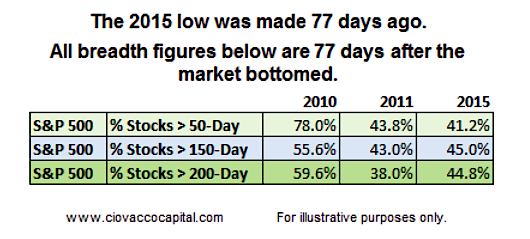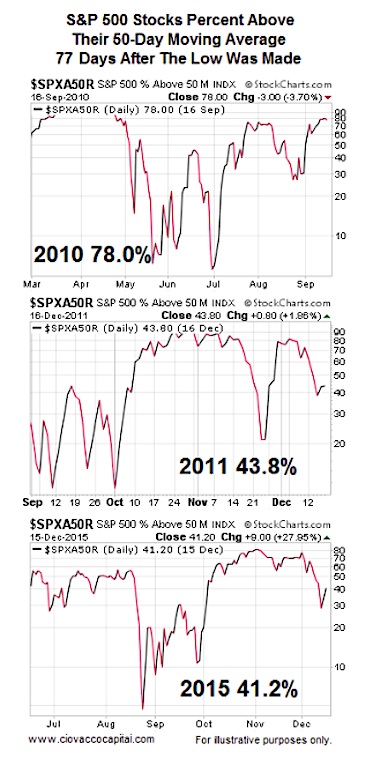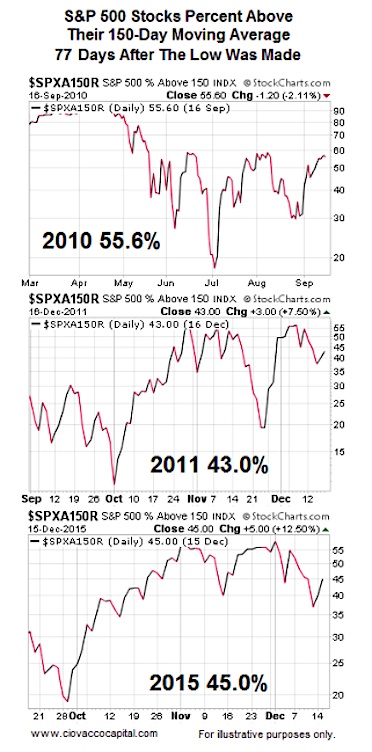2015 Stock Market Breadth Versus 2010 and 2011
Market breadth speaks to the percentage of stocks participating in a stock market rally. All things being equal, the broader the participation the healthier the market.
In this article, we will examine stock market breadth for both the S&P 500 and NYSE Composite Stock Index. We will also examine 2015 breadth vs. similar points after a correction and similar points in a bear market. Stock market breadth is not particularly useful as a short-term timing tool for the S&P 500; it can be helpful on longer-term time horizons. The breadth stats are through Tuesday’s market close.
2015 Breadth Versus 2010-2011
The S&P 500 bottomed on September 29, 2015 or 77 calendar days ago. It is common for breadth to become weak during a correction and then improve after a market bottom is reached. Therefore, we can gain some insight into 2015 by comparing stock market breadth figures in 2010 and 2011 77 calendar days after the stock market made a low.
As the summary table below shows, 2015 breadth is not significantly different than at similar points during the 2010 and 2011 rallies. In fact, in some cases 2015 breadth is better.
Did Bear Markets Begin In 2010 or 2011?
The answer to the question above is no. Therefore, if 2015 breadth is similar to breadth in 2010 and 2011, it is difficult to say 2015 breadth is screaming “a bear market is imminent”. Our purpose here is not to say 2015 breadth is bullish, but rather to say:
Stock market breadth is not that bad right now relative to recent corrections. The jury is still out on the bull market vs. bear market question based on market breadth.
S&P 500 Stocks Greater Than 50-Day Moving Average
The 50-day moving average helps us monitor the health of short to intermediate-term trends.
In 2010 77 days after the correction ended, 78.0% of S&P 500 stocks were above their 50-day moving average.
In 2011 77 days after the correction ended, 43.8% of S&P 500 stocks were above their 50-day moving average.
In 2015 77 days after the correction ended, 41.2% of S&P 500 stocks were above their 50-day moving average, which is very similar to 2011.
S&P 500 Stocks Greater Than 150-Day Moving Average
The 150-day moving average helps us monitor the health of intermediate to long-term trends.
In 2010 77 days after the correction ended, 55.6% of S&P 500 stocks were above their 150-day moving average.
In 2011 77 days after the market correction ended, 43.0% of S&P 500 stocks were above their 150-day moving average.
In 2015 77 days after the correction ended, 45.0% of S&P 500 stocks were above their 150-day moving average, which is better than 2011.
continue reading on the next page…











